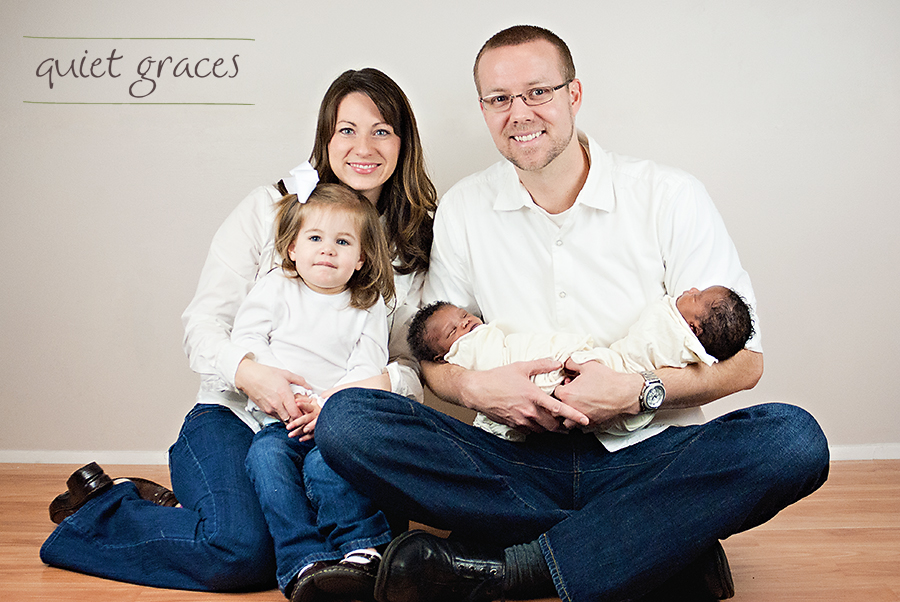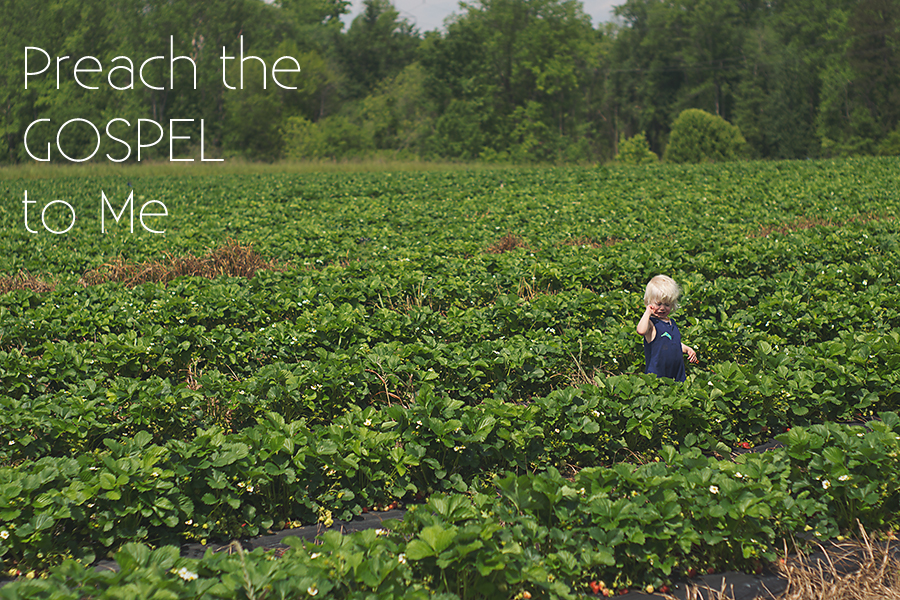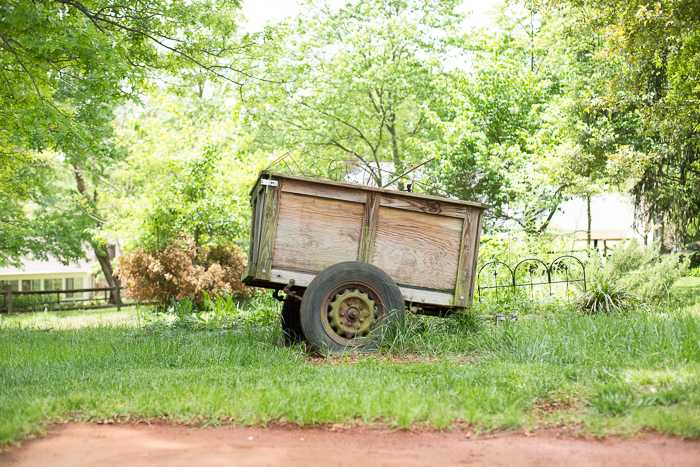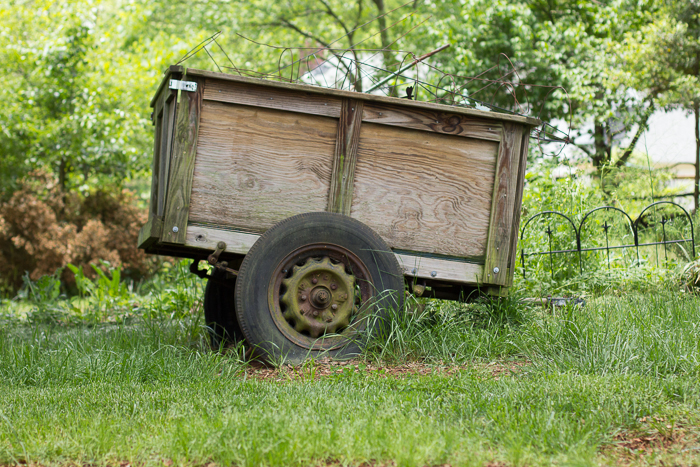23
2013My session with this dear family started like most with a simple inquiry in my Facebook messages.
But this wasn’t the normal sort of photography inquiry. In fact, it had nothing to do with photography at all. Diane and Titus had just been selected by a birth mom pregnant with twins and wanted to pick the brain of the only woman they knew with young twins: me.
One thing led to another after I dumped my unused double stroller, registry advice, and lots of crazy pep talks on Diane, I begged to photograph the babies. I’m pretty shameless. 🙂 Adoption is expensive and I like to love on adoptive families however I can. So a session with the most gorgeous twins I’ve ever laid eyes on (besides my own), was sooo exciting that it was a gift.
However, as a twin mom, it wasn’t the best gift I could give. The best gift were words of comfort when I heard Diane had hit the 2-4 month absolutely exhausted slump. I wrote down how difficult it is to like two beings who rarely let you sleep more than 2 hours straight and yet whom you love dearly. The first 5 or so months of twin motherhood is pure survival mode. It’s hard. I’m not saying it’s not worth it, because I love being a twin mom. But there are moments in those first months where I would have handed over my babies to that kind old stranger lady in the grocery store who uttered the words “I always wanted twins” just to go home and nap. There are moments where somehow the grace of God eased me through, but I still have no idea how I and the babies survived. And I want new twin mothers to hear that it’s okay to have those feelings and those moments.
I come to love each session more than the last… but I have to say this is one of my very favorite sessions ever. Diane and Titus, thank you for letting me talk you into coming for a session! It was a true gift for me to snuggle your new ones.
I had some help from the lovely Mayfield Photography for this session. She shot some spectacular detail images and was also the hands behind my composite shots!
21
2013Focal Length
Last week I threw around the term focal length a lot without defining it. The technical definition of focal length is beyond the comprehension of anyone whose not really engineer minded. If you’re really interested, here’s a wikipedia article. For our purposes, what we need to know is that focal length determines the angle of view; the longer the focal length, the smaller the angle of view and the more we have a sense of being “zoomed in” to the subject.
The focal length of lenses fall on a spectrum from super wide angle to telephoto. Wide angle lenses capture more of a scene while telephoto lenses zoom in to the capture only part of a scene. The spectrum runs from around 8mm (wide angle) to 5000mm+ (telephoto).
Here is a nearly full range of focal lengths used to take the same shot from the same location. This will give you a feel for how focal lengths affect the resulting image. All of these images are shot with a crop sensor so an 18mm lens is creating an image that would be more like what 24mm lens would on a full frame camera.
In the rest of this post we’re going to get into the nitty gritty of lens focal lengths, the distortion different focal lengths create, and when to use each focal length. We’ll start at the wide end of the spectrum and work our way to the telephoto end. I’ll also mention a few specialty lenses that can be creatively fun!
This following is a reference article, so feel free to skim over just the lens focal lengths that catch your eyes or that you already own.
Read More»15
2013She sits down at my table to a plate of just barely warm eggs. She’s tired and she has a long stressful day ahead of her. It’s only 8 am.
“Let’s preach the gospel to each other.” She whispers with wild eyes. “I’ll go first: He is in control.”
Over the course of just 2 minutes we rehearse at least the following truths of the gospel:
- He loves us more than we can imagine.
- He is working everything for our good, even if it hurts.
- His name is Justice. Even when we feel like we have not justice.
- He will never leave or forsake us.
- Our job isn’t to be perfect, but to repent, forgive, and love because we are loved.
And hours later I watch my kids climb trees and pick clover and completely ignore the park structures just 10 feet from us, I wonder about this exchange. I wonder that we, like my children, ignore the specifically constructed playground of the gospel, in preference for pushing each other up the rough ladder of perfectionism. We whisper “Higher, higher. Just pick yourself up again.” Instead of “Run to Jesus. He loves you. It’s he who works in you.”
What if we stopped giving that piece of advice? What if we stopped telling our stories under the guise to encourage? What if we stopped pulling ourselves up by our bootstraps to try again and just cry ugly tears and ask a friend to simply preach the gospel to us?
What if we spent our waking hours preaching the gospel to each other? To our husbands, to our children, to our friends, to the lady with mascara streaks standing in the ice cream aisle, and even to ourselves.
So tell me, friends, how can we preach the gospel this week? Or how have you preached the gospel in the past? I’m hungry to know how the gospel works out.
14
2013This is a quick aside lesson that I didn’t plan for! As I started the focal length post on camera’s I realized that describing focal lengths is difficult because they’re affected by the size of your sensor. I’m used to describing things as if I were shooting full frame 35mm film so in next weeks post on focal lengths, I will be describing lenses that way.
The problem is all of us actively participating in this class (except for Amanda-lucky duck!) shoot on a crop sensor. So I’ll also include a sentence or two in parenthesis describing the difference on a crop sensor for those focal lengths most affected by a crop sensor in the following post. But for now, let me tell you the difference between crop and full frame sensors.
What is a Full Frame Sensor?
A full frame sensor is the same size as a 35mm piece of film.
If you’re a beginning photographer taking or observing this class, you most likely do not have a full frame camera. Full frame camera bodies (without a lens) cost upwards of $2300 (you might find a used one hovering around $1800). I do not own a full frame camera nor will I own one when my camera body upgrade arrives.
What is a Crop Sensor?
If a full frame sensor is the same size as a 35mm piece of film, then it follows that a crop sensor is ‘cropped’ or smaller than a 35mm piece of film.
At first this doesn’t seem like a big deal. Sure it’s a smaller sensor, so obviously the picture quality is not as great, but that doesn’t seem like a huge trade-off in regard to camera price.
The big deal is because lenses are built for a 35mm sensor/film the focal length plane has changed. So not only is the sensor sized cropped, but the actual image taken is cropped as well. A lot of this depends on a the ratio of the sensor size to a full frame sensor, but I’m not going to get that technical. The following is the short story.
Shooting with a Crop Sensor ‘Zooms’ the lens Focal Length
On average a crop sensor zooms or crops your frame around 15-25mm. This makes your focal length act as if it were 20-30mm longer than what the lens is labeled.
For instance, on a full frame camera a 50mm focal length lens is considered closest to what the human eye sees. 50mm is referred to as a normal lens for this reason. This is an image of taken by a 50mm on a full frame camera.
This is the same image from the same spot taken on a crop sensor also with a 50mm lens. The crop sensor appears to make the lens zoom in when in reality it’s just the smaller sensor size creating that affect.
Essentially, on a crop sensor a 50mm lens becomes a 75mm lens. So on a crop sensor, a “normal” lens is actually either a 30mm or a 35mm to account for how the crop sensor zooms in that 15-25mm.
Is that clear?
I know crop versus full frame sensor is an extremely ‘advanced’ concept in the photography world. But I totally felt that if I didn’t explain the difference before the focal length lesson that things would get confusing for all of us.
I may have confused you more… but what you really need to know is that when I describe a lens in the next post that you’ll need to mentally add 15-25mm to that lens to see what the effect will be on your crop sensor. So an ultra wide lens (as you’ll learn next week) will likely only be a wide angle lens on your crop sensor.
I also want you to hear now that some lenses will not work on a full frame sensor. They’re built for a crop sensor and will only work for a crop sensor. So if you have an inkling that one day you might like to work on a full frame sensor, then invest in lenses that work on both crop and full frame sensors.
***Much Thanks to Amanda for taking these quick snaps on her crop and full frame cameras so that you could visualize the difference!. 🙂
07
2013A Little Class Itinerary Note
We’re coming up on a half year of working through this class! I find that hard to believe!
I’m extending your Storytelling with Images “due date” until Friday, May 24th. Again, due dates are relative because this is totally a jump right in wherever you are sort of class. So jump right in. But I’ll be featuring all of my students again on Tuesday May 28th. So if you’d like to be featured then put your assignments into the Quiet Graces Free Beginner’s Photography Class Flickr Group on or before Friday, May 24th 🙂
There will be no assignments for the next three weeks to give you time to finish this super intense Storytelling with Images series. If you’ve finished all the assignments, go back and revisit the assignment that challenged you the most. I always enjoy redoing some of these key assignments.
For the next three weeks, we’ll have three short posts on Camera Lenses. All will be simply informative to give you time to finish up and to give me time to dive into writing June’s series on shooting in Manual Mode and another super secret writing project that has nothing to do with photography but will likely be announced the last week in May as well.
A few questions for you to answer in the comments as I plan/write manual mode lessons: How is program mode working for you? What has been hard about it for you? Have you got a good handle on using program mode and thinking about exposure compensation? Do you have any program mode questions before we dive into manual mode?
Any questions other questions, class? If so, jump into the comments. If not, let start getting a little information on lenses.
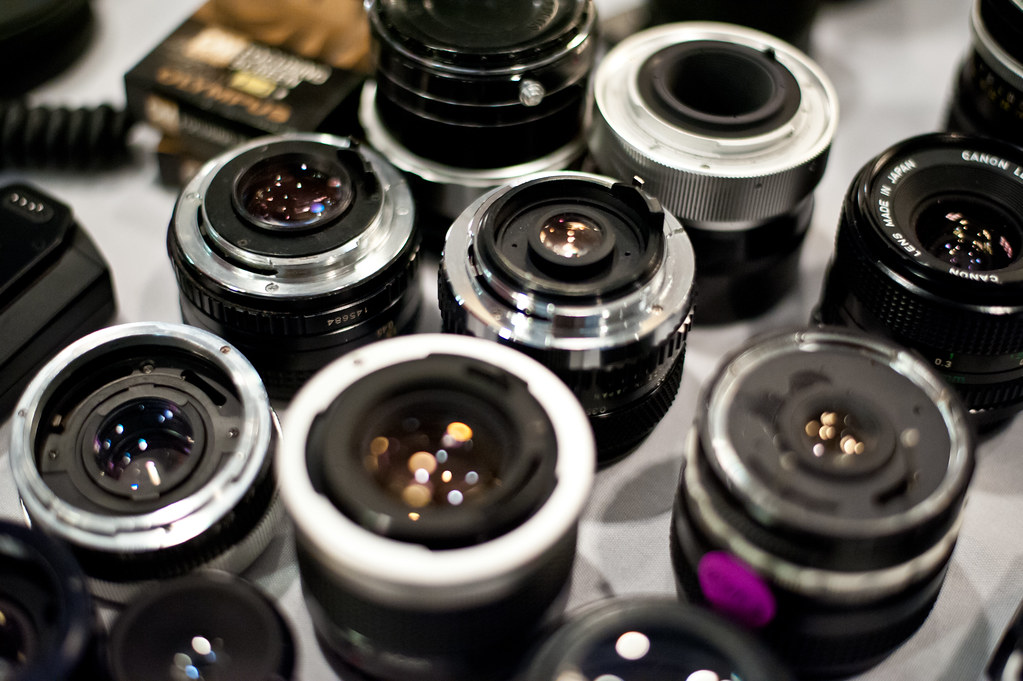
Image Courtesy KayOne73 on Flickr
What Are the Main Lens Types?
There are two different types of lenses on the market today: zoom lenses and fixed focal length (or prime) lenses. Most of us are familiar with zoom lenses since this is what usually comes installed within Point and Shoot Cameras or as part of a beginner DSLR kit. Yet, most beginner photographers are unaware of prime fixed focal length lenses. In this post I’ll define and do a pro/con comparison of zoom and prime lenses. I want you to know offhand that I am most definitely a prime lens girl, I’ll try to be unbiased in the pros and cons 🙂 Know that almost every photographer prefers one over the other and that it’s totally okay to do so!
Zoom Lenses
A zoom lens is probably the lens most find familiar. Almost all DSLR camera kits come with a zoom lens and most Point and Shoots are also equipped with zoom lenses. The photographer manually manipulates the lens to decide how much of the scene they will capture. On a DSLR you change the focal length by twisting the lens in and out. On a Point and Shoot, you usually have a button control that zooms in our out. We’ll define focal length a bit more in our next lesson, but for now know that the zoom lens has a variable focal length which changes the amount of the scene we can capture.
Pros of a Zoom Lens
- Able to capture a scene in multiple ways as you ‘zoom in’ closer to the action
- Can be used for work that requires multiple focal lengths without changing your lens. For instance, you can photograph both the just the bride and groom kissing as well as the entire wedding party without switching lenses.
- You don’t have to switch lenses for different situations. For instance, if your living room is small my 50mm might put me too close to your kids to capture both of them playing at the same time. Because I use prime/fixed focal lenses, I will have to switch lenses to capture both kids playing. While you, using a zoom lens, will just zoom out.
- Less gear to carry around your bag. A 18-55 or 70mm and a 70-200mm zoom will cover most any situation the average photographer comes. While in prime lenses I would need an 18mm, 35mm, 50mm, 85mm, 100mm, and 200mm lens to cover the same range!
- Carrying less gear means even if you buy quality fast f/2.8 zooms you might spend less than a prime lover whose goal is to cover the same range of focal lengths.
- In general, a zoom lens is typically cheaper than prime lenses unless you’re buying a quality fast f/2.8 zoom lens.
Cons of a Zoom Lens
- Heavy. I know a few wedding photographer friends who have developed carpal tunnel syndrome from carting around 70-200mm lenses.
- Things are not as sharply focused as a prime lens. Because they are more complicated to manufacture, zoom lenses often have a range that is most sharp. For instance on an 18-55mm lens, the 30-40mm range will most likely produce the sharpest images.
- Can be very expensive if you want a ‘fast’ lens with an aperture of f/2.8
- If they don’t have a higher aperture of f/2.8, you may find yourself needing to use flash in a darker building to both freeze the action or capture the scene.
- Tempt a photographer to stay in one place rather than move around to frame a shot because the photographer thinks “they can just zoom in.” This can stifle creativity if the photographer isn’t careful.
Fixed Focal Length Lenses (or Prime Lenses)
Prime lenses do not zoom. Using a prime lens is sort of like looking through a magnifying glass: to see the object closer you move the glass closer. With prime lenses you will “zoom with your feet.” At first, moving around to zoom is an unusual or inconvenient situation, but it also helps me to focus on getting the best composition. Some people love primes and some people hate them. It all depends on what and how you like to shoot.
Pros of Prime Lenses
- Lightweight. An 85mm prime lens is way lighter than the 70-200mm zoom that covers the 85mm range.
- Typically produce sharper images than their zoom counter parts.
- Primes are generally better for low light because their widest apertures are wider than zoom counterparts. You can purchase primes with apertures of f/1.2 and it’s hard to find a zoom with an aperture greater than f/2.8
- You can select a focal length specific to the subjects you enjoy most. If you want to photograph scenic vistas, you’ll be snatching up a prime in the 14-28mm range. If you photograph people, you’ll pick between a 50mm or 85mm lens. If you love macros, you’d grab a prime 60, 90, or 100mm macro. Specialty is a strong point with primes.
- You are forced to “zoom with your feet” with a prime lens. This can promote more creativity in image composition because you are unable to stay in one place and zoom in.
Cons of Prime Lenses
- Can be expensive. A prime lens with an aperture of f/2.8 or wider generally costs more than a ‘slower’ zoom lens.
- To cover the whole range that a zoom lens covers you’ll likely have to spend as much if not more than the cost of buying one quality fast f/2.8 zoom. Buying an 18mm, 35mm, and 50mm zoom lens with fast apertures will be way more expensive than a single 18-55mm f/2.8 zoom.
- Super fast primes of f/1.4 and f/1.2 are incredibly expensive.
- You’ll need to purchase and carry more prime lenses if you shoot a huge variety of subjects (macro insect shots, panoramic zoom scenes, and portraits for instance).
- You can’t zoom in without moving your body. This takes some getting used to… but it’s also a huge pro (see above).
How Do these Lens Types Apply to Point and Shoot Users?
If you’re using a point and shoot camera you could have either a Prime Lens or a Zoom lens just like the rest of us. But Point and Shoots get a little confusing because they may also have “Optical Zoom”.
Here’s the short story.
- Your camera has a prime lens if you don’t see the lens on the outside of your camera moving in and out as you zoom.
- Your camera has a zoom lens if you do see it moving in and out as you zoom in.
- If your camera has Optical Zoom that does not mean it has a zoom lens. It means your camera has the ability to crop your image before you release the shutter.
- My phone camera is a fixed focal length lens with optical zoom. My first digital point and shoot had a zoom lens that when you zoomed all the way in also had a “6x Optical zoom” feature that cropped the image in camera even more.
- When you enter the optical zoom zone of your camera, remember that your image quality is going down just as if you cropped the image afterward in photo editing software. So if possible, get closer to your subject rather than use optical zoom.
